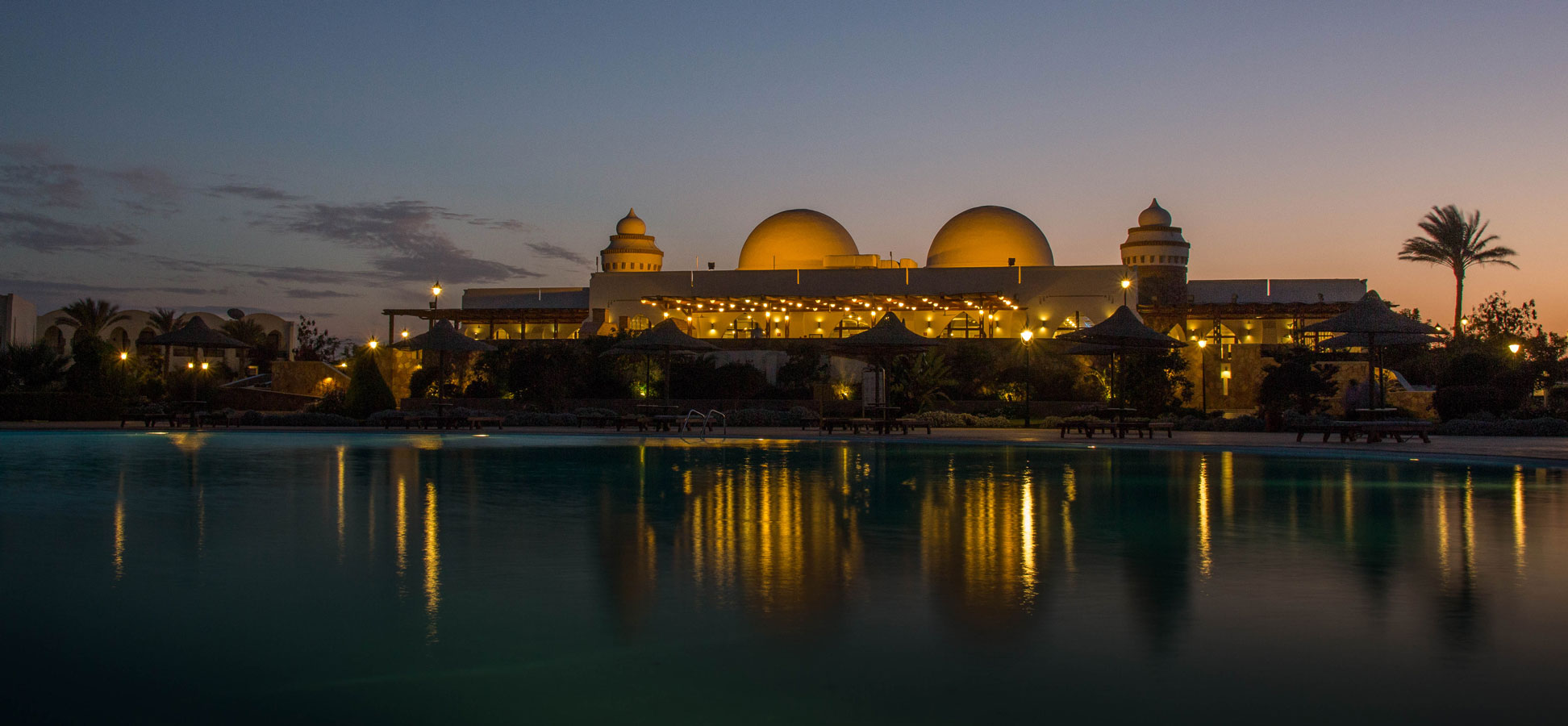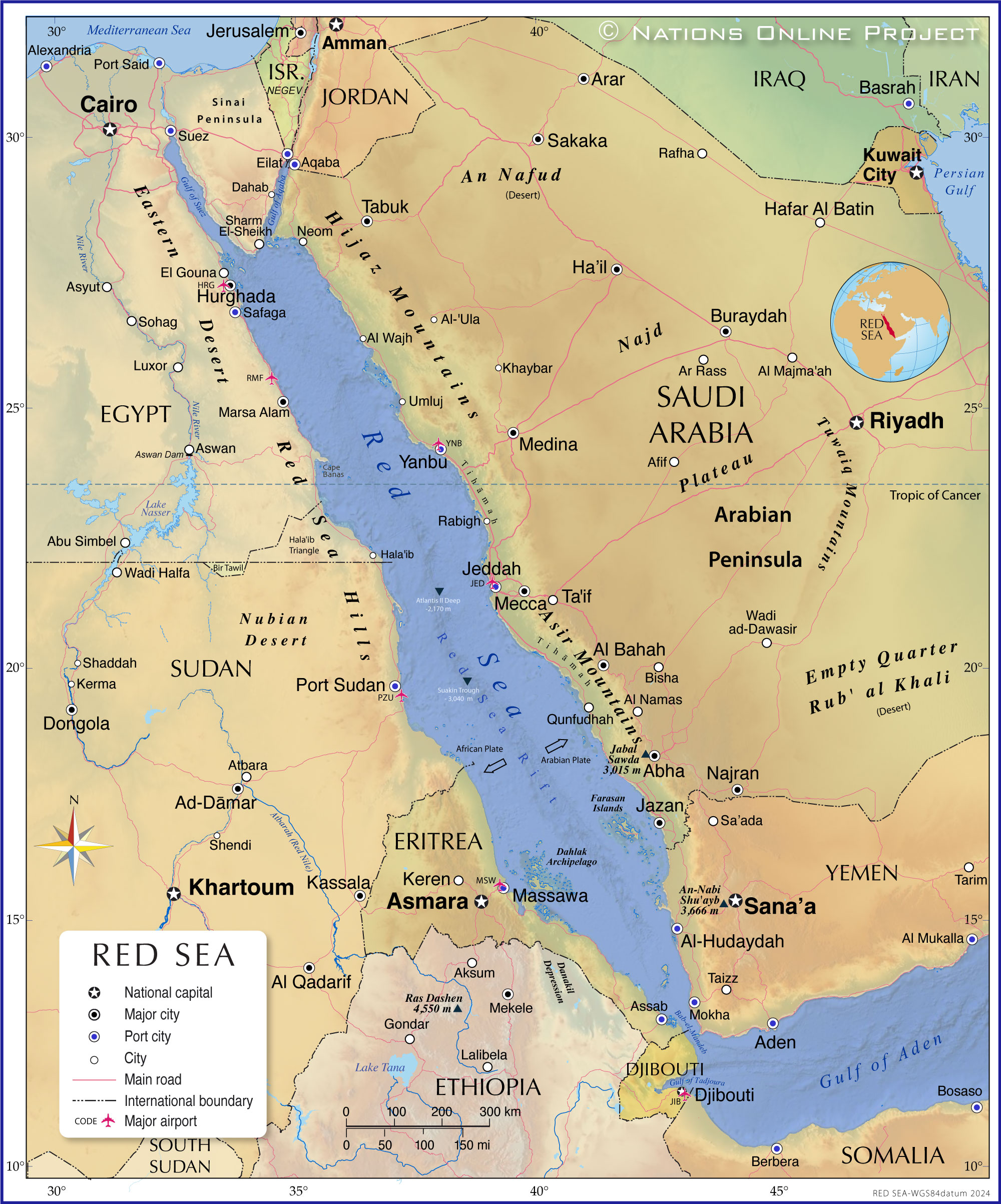More about the Red Sea
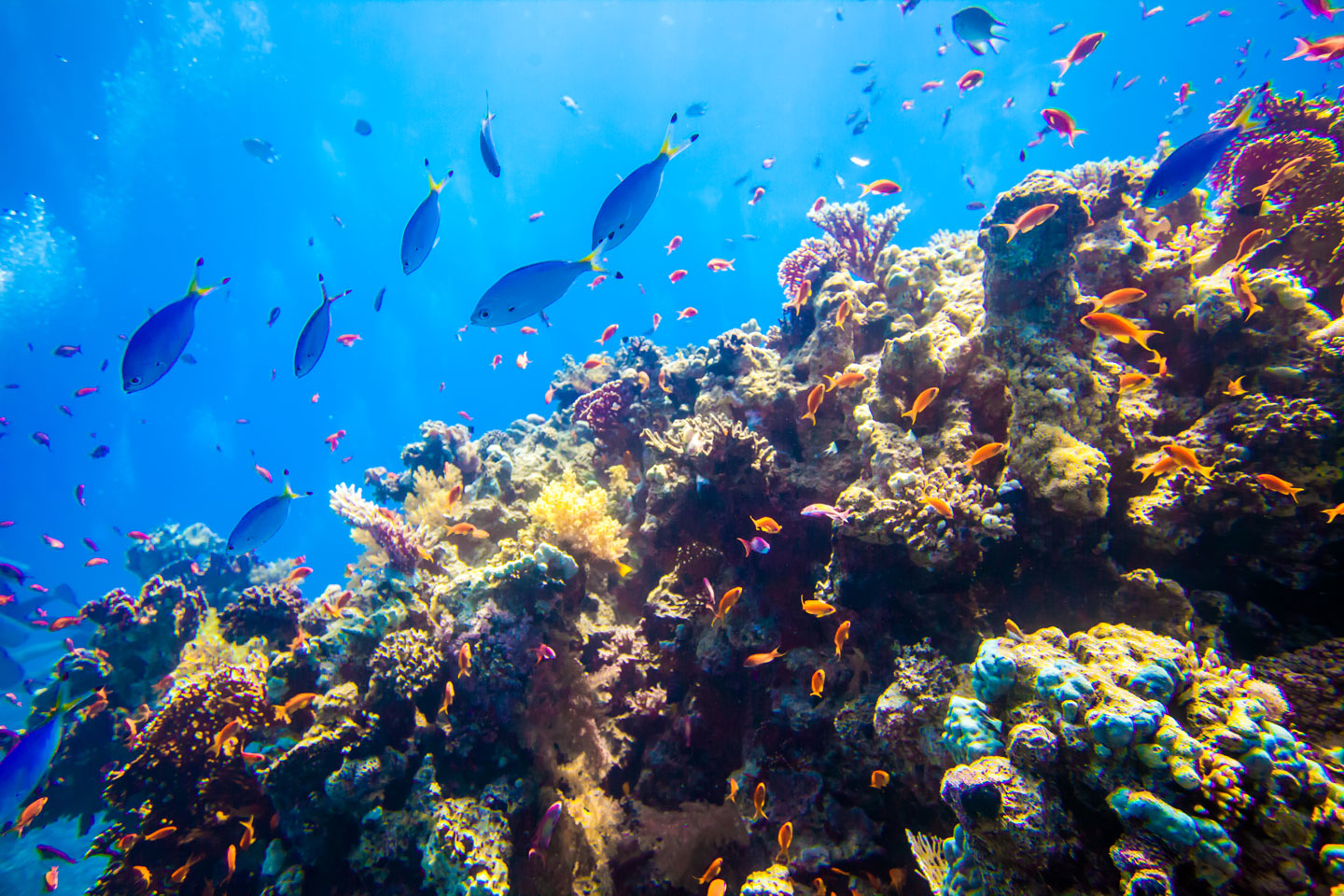 Diving in the Red Sea near Sharm el-Sheikh, an Egyptian resort town between the desert of the Sinai Peninsula and the Red Sea.
Diving in the Red Sea near Sharm el-Sheikh, an Egyptian resort town between the desert of the Sinai Peninsula and the Red Sea.
Photo: Andrew K
55 million years ago, Arabia began to move away from Africa. 25 million years later, the Gulf of Suez opened up, and 10 million years after that, the northern part of the Red Sea.
The creation of the Red Sea started with the movement of the African and Arabian tectonic plates away from each other, separating the Arabian Peninsula from Africa and creating the Red Sea Trench, a section of the East African Rift.
The extremely slow tectonic movements cause ongoing geological events such as the formation of new earth crust, volcanic activity, and the spreading of the seabed. These geological activities created an underwater landscape with a deep central trench and relatively shallow continental shelves on both sides.
The Red Sea is known for its clear waters, rich biodiversity, coastal mangroves and healthy coral reefs. There are numerous relatively small islands in the Red Sea, which are mainly located near the coast. The sea is also one of the busiest shipping routes in the world, carrying maritime traffic between
Asia and
Europe. Due to its connection with the Mediterranean Sea, the Red Sea is one of the busiest waterways in the world. An estimated 12 to 16 percent of global trade passes through the Red Sea and the Suez Canal.
[EB] [PBS]
There are around 15 major ports on the Red Sea. The busiest is Saudi Arabia's
Jeddah Islamic Port. The port serves Jeddah and the holy cities of
Mecca and
Medina.
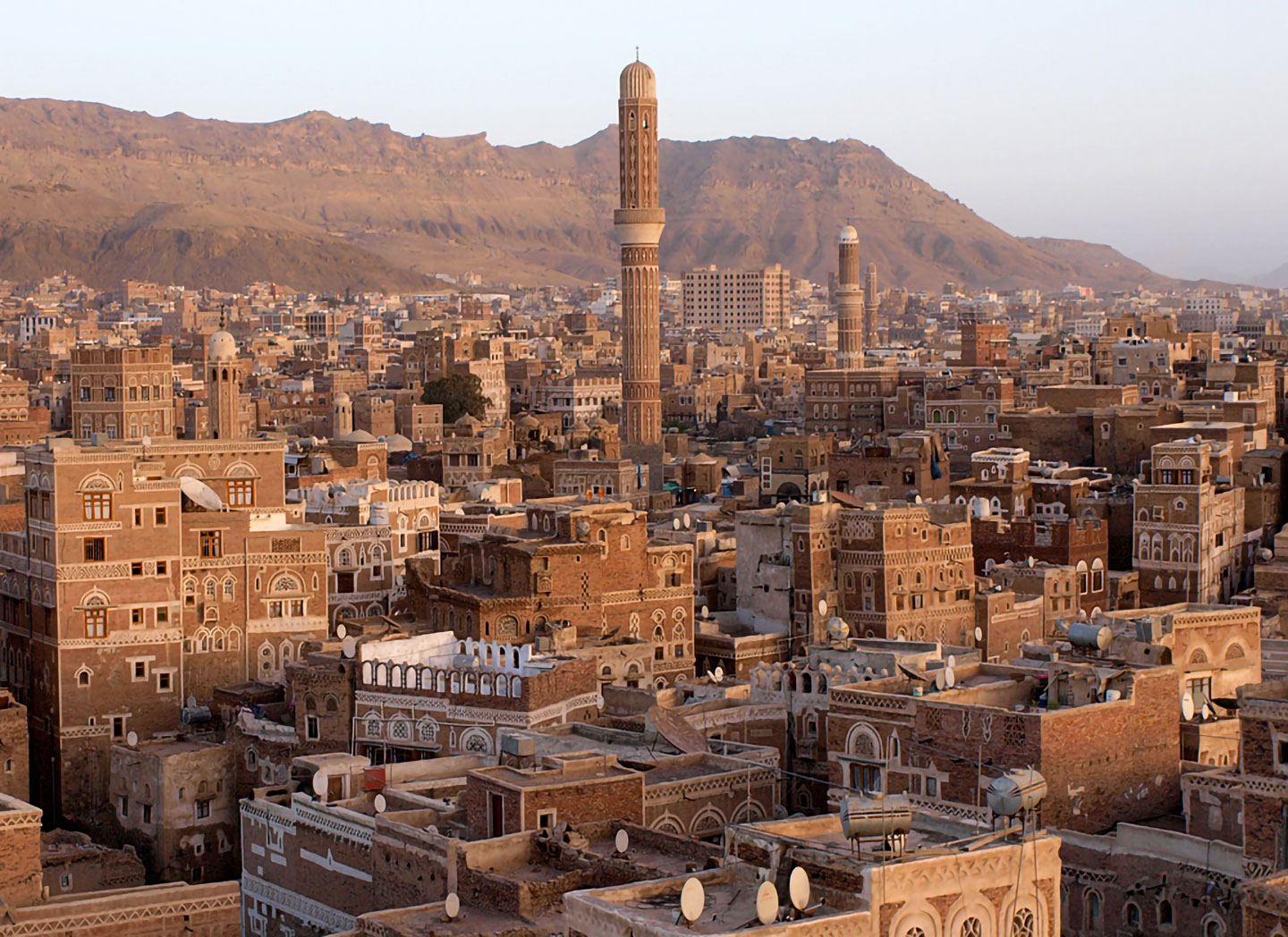 Typical architecture in the old town of Sana'a, the capital of Yemen.
Typical architecture in the old town of Sana'a, the capital of Yemen.
Photo: Antti Salonen
After the start of the Israel-Hamas war, Iran-backed Houthi militia in Yemen started to attack commercial vessels and tankers in the Red Sea. Several shipping and oil companies diverted their ships around
South Africa (Cape of Good Hope) to avoid such attacks.
The Red Sea is 360 km (225 mi) wide at its widest point and is about 1,960 km (1,220 mi) long, from the Bab el-Mandeb Strait in the south to the tip of the
Sinai Peninsula in the north. The southern two-thirds of its length are in the tropics. The sea has a maximum depth of 3,040 m, making it one of the deepest gulfs in the world, despite the fact that it is quite shallow in large parts.
Due to its location between the Sahara and the Arabian Desert, volcanic activity in the Rift Zone and relatively shallow waters, the Red Sea is one of the warmest bodies of water in the world.
Brine pools
The Red Sea is known to have brine pools. Brine pools are reservoirs of water on the seabed with a very high salt content. Due to the high salinity, the pools are denser and won't mix with the surrounding seawater. They form a distinct surface and shoreline like a lake under an ocean.
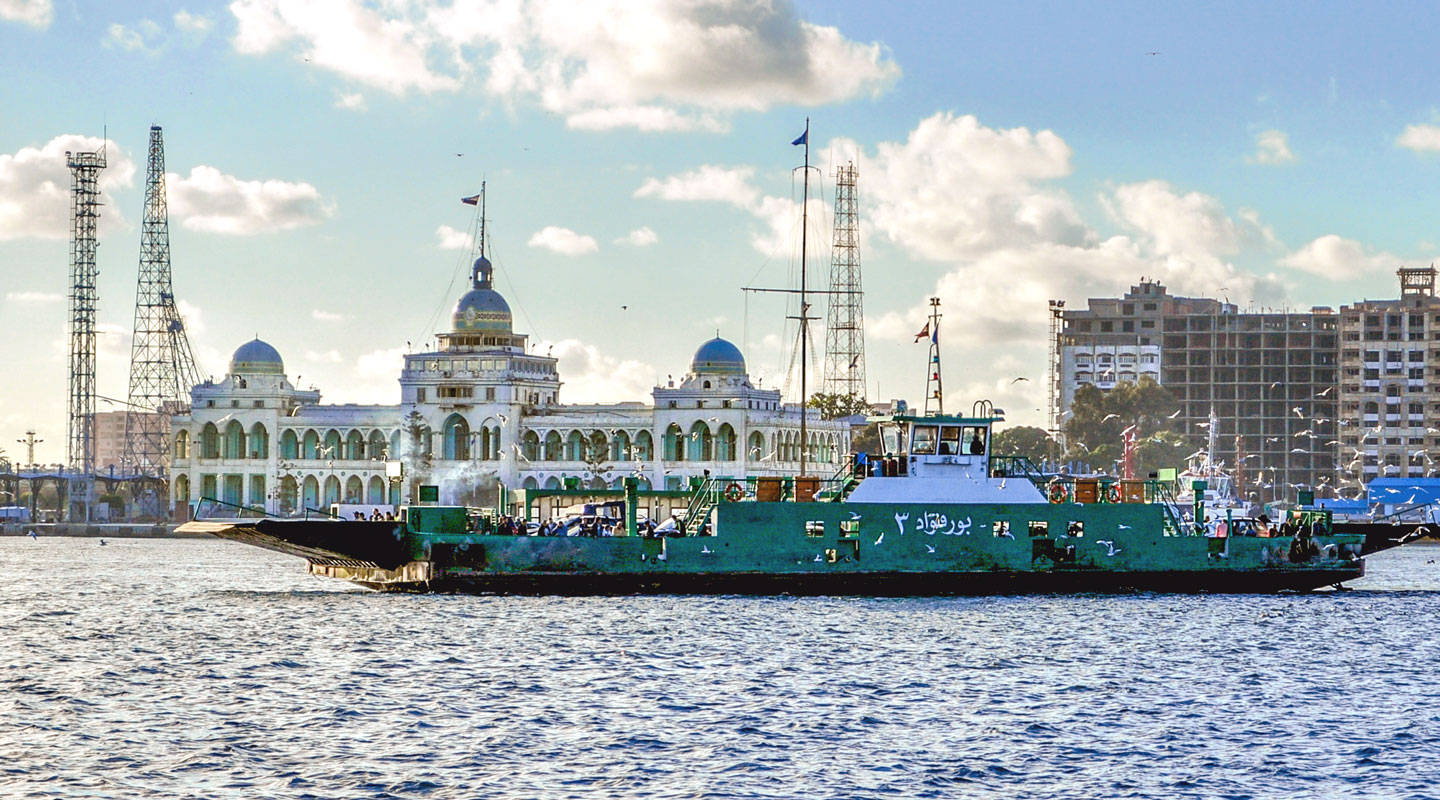 The Suez Canal Authority building in Port Said and a ferryboat crossing the Suez Canal between Port Said and Port Fouad.
The Suez Canal Authority building in Port Said and a ferryboat crossing the Suez Canal between Port Said and Port Fouad.
Photo: Redthunder22
The northeastern branch of the Red Sea is the Gulf of Aqaba. It is bordered by four countries: Israel, Jordan, Egypt, and Saudi Arabia. The port at Aqaba is Jordan's only access to the world's oceans. Israel's southernmost city, Eilat is a busy port and popular tourist resort on the gulf.
Gulf of Suez
The Gulf of Suez is the northwestern arm of the Red Sea; it is connected to the Mediterranean Sea through the Suez Canal.
Suez Canal
The Suez Canal is an artificial waterway in Egypt that connects the Gulf of Suez with the Mediterranean Sea. The canal was opened in November 1869 and runs in a north-south direction through the Isthmus of Suez. It is the shortest sea link between Asia and Europe. Before the canal was built, ships had to take a much longer route and sail around Africa. The canal is operated and maintained by Egypt and is an important source of income for the country.
Major port cities on the Red Sea
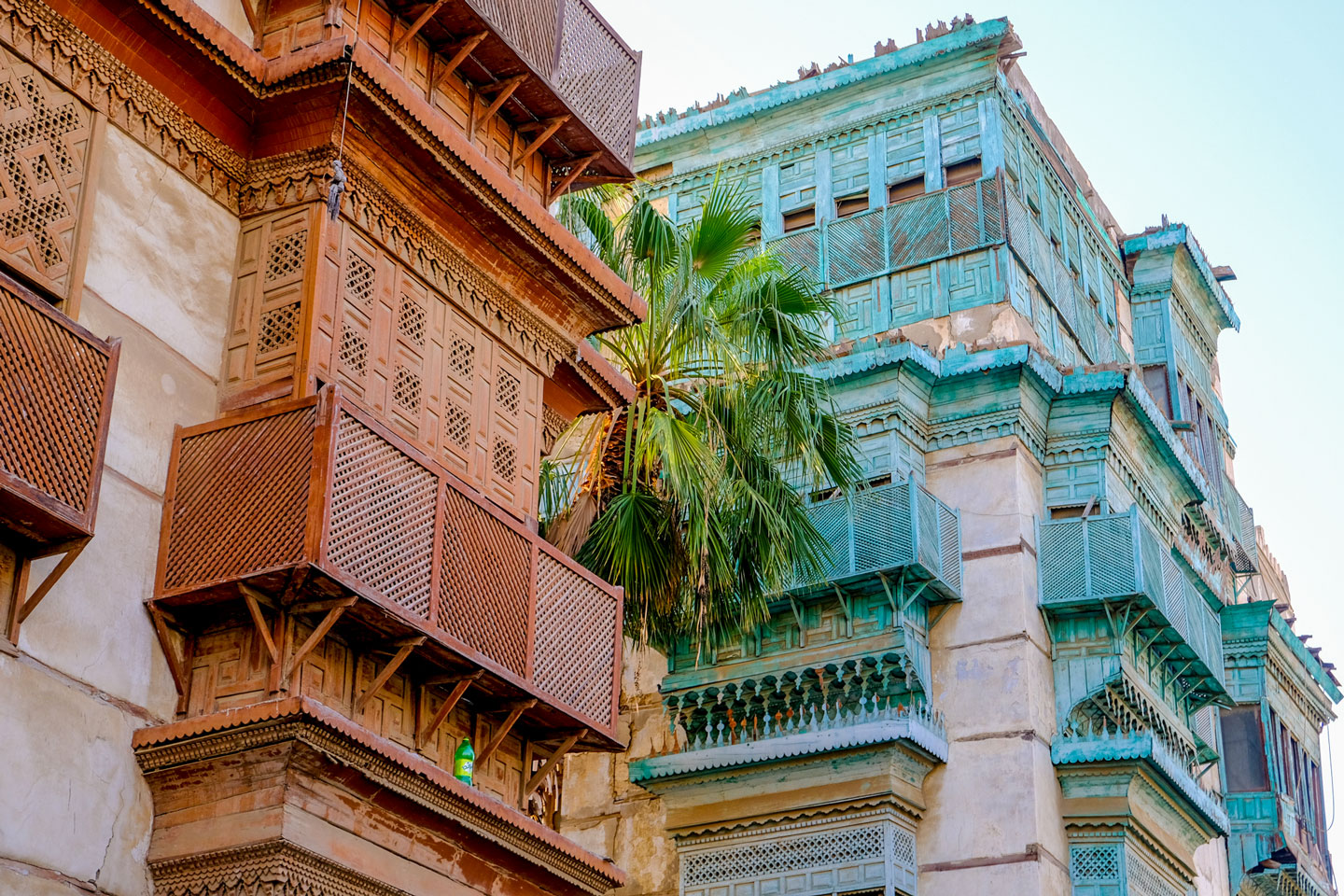 Rawashin is the intricate woodwork of balconies in the traditional Hijaz design in Jeddah, Saudi Arabia's most important port city.
Rawashin is the intricate woodwork of balconies in the traditional Hijaz design in Jeddah, Saudi Arabia's most important port city.
Photo: Francisco Anzola
The Red Sea is a strategic waterway that connects Western Asia, Africa, and Europe through the Suez Canal. Its many port cities are hubs for trade, tourism and military activities.
Jeddah Islamic Port, Saudi Arabia
Jeddah Islamic Port is the primary port of Saudi Arabia and the second largest and busiest port in the Arab world. It has specialized terminals for containers, general cargo, livestock, grains, and passengers. Jeddah is served by
King Abdulaziz International Airport (
IATA-code: JED)
Port of Suez, Egypt
The Port of Suez is a strategically important maritime facility located at the northern end of the Gulf of Suez in Egypt. It serves as a critical link between the Mediterranean Sea and the Red Sea, allowing ships to bypass the lengthy trip around the southern tip of Africa (Cape Agulhas). The port plays a vital role in global trade, facilitating the transportation of goods between Europe and Asia.
Port of Sudan, Sudan
Sudan's main port is Port Sudan in the northeast of the country. The port handles general cargo, containers, RORO, bulk, and petroleum. It also has an offshore oil terminal for the import and export of LPG and petroleum products. Port Sudan is served by the
Port Sudan New International Airport (IATA-code: PZU).
Port of Djibouti, Djibouti
Djibouti is strategically located on the Bab-el-Mandeb Strait, which separates the Gulf of Aden from the Red Sea. The port of Djibouti is an important regional trading hub and the main transshipment point for goods from landlocked Ethiopia. The port is a terminus of the
Addis Ababa–Djibouti Railway, which connects Ethiopia's capital
Addis Ababa, with Djibouti's port. The railway is the largest Chinese-financed infrastructure project in East Africa. The port handles containers, general cargo, bulk, RORO, and livestock. It also hosts several foreign military bases, such as those of France, the United States, China, and Japan. Djibouti is served by
Djibouti–Ambouli International Airport (IATA-code: JIB).
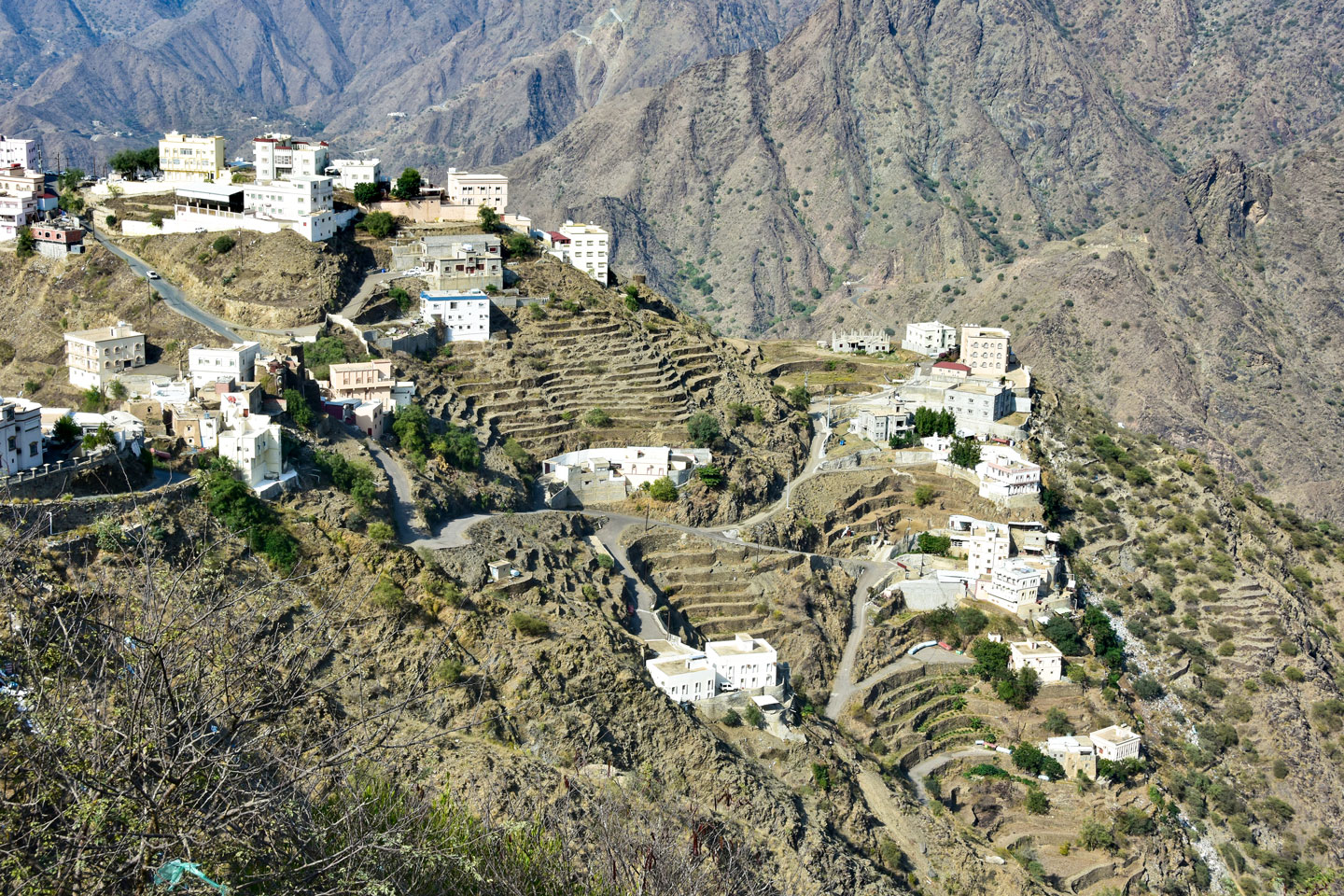 Saudi Arabia's Al-Dayer Bani Malek province in the Jazan region is famous for its stone castles, fortresses and agricultural terraces used to produce corn, millet, barley, and coffee. [1]
Saudi Arabia's Al-Dayer Bani Malek province in the Jazan region is famous for its stone castles, fortresses and agricultural terraces used to produce corn, millet, barley, and coffee. [1]
Photo: Richard Mortel
, Eritrea
The Port of Massawa is the main port of Eritrea. The old town of the city is a mix of African, Italian, Egyptian and Ottoman architecture, reflecting the city's colorful history. The port handles general cargo, containers, bulk, and petroleum. It also serves as a naval base for the Eritrean Navy and a tourist destination for its coral reefs and islands. The city is served by
Massawa International Airport (IATA-code: MSW).
Yanbu Commercial Port, Saudi Arabia
The Yanbu Commercial Port is one of the major ports of Saudi Arabia and a vital link for the industrial city of Yanbu. The port handles general cargo, containers, bulk, and petroleum. It also has a dedicated terminal for the export of phosphate and fertilizers. Yanbu is served by
Yanbu Airport (IATA-code: YNB).
Port of Safaga, Egypt
The Port of Safaga is one of the oldest ports of Egypt and a gateway to the Upper Nile Valley. The port handles general cargo, containers, bulk, and passengers. It also serves as a ferry port for pilgrims to Saudi Arabia and a tourist resort for its beaches and diving sites. The nearest airport is
Hurghada International Airport (IATA-code: YNB).
Port of Eilat, Israel
The port of Eilat is Israel's port on the Red Sea and a strategic asset for the country. The port handles general cargo, containers, bulk, and passengers. Eilat is home to an Israeli naval base and is a popular tourist destination due to its coral reefs and marine life. E is served by
Eilat-Ramon Airport (IATA-code: ETM).
Port of Aqaba, Jordan
The Port of Aqaba is a major logistics hub and an important part of Jordan's economy. It is Jordan's only access to the world's oceans. The port contains the Aqaba Container Terminal (ACT), one of the busiest facilities on the Red Sea by container volume. Aqaba is served by
King Hussein International Airport (IATA code: AQJ), the only civilian airport outside Amman, the country's capital.
Port of Hodeidah, Yemen
The Houthi-controlled port of Hodeidah on the Red Sea is an important port in Yemen and a lifeline for the country's humanitarian supplies. Besides general cargo, containers, bulk, and petroleum, the port handles up to 80% of humanitarian aid, fuel and merchandise for northern Yemen. It also serves as a naval base for the Yemeni Navy and is a hotspot for the ongoing civil war and conflict.
Port of Mokha, Yemen
Until the 19th century, Mokha was the principal port for Yemen's capital, Sanaa. Mokha was known for its coffee trade and gave its name to Mocha coffee.
Port of Aden, Yemen
The
Port of Aden on the Yemeni
Gulf of Aden coast is Yemen's primary port.


